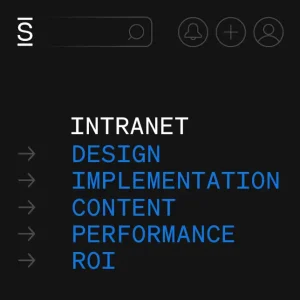In today’s fast-paced world, you shouldn’t let your technology stop you from moving at the speed of business.
Yet, the average time it takes an organization to deploy an intranet is 1.2 years! We’re seeing that some organizations are still reinventing the wheel, and stuck in intranets of the past when it was necessary for IT or technical teams to build, deploy, and maintain intranets.
Simpplr’s rapid intranet deployment in 60 days
We recently worked with an enterprise customer with over 5,000 employees. A third of the company did not have access to the internet which prevented deskless workers from having access to top-down communications, resulting in a sense of cultural inequity. Our customer needed to connect and engage their distributed employees with the rest of the employees working at headquarters. Within 60 days, they were able to successfully launch and deploy Simpplr’s intranet, enabling them to align the company’s mission and values across the board.
Requiring custom-built or homegrown intranets is attributed to the lengthy average time it takes to deploy an intranet. Modern employee intranet software today are out-of-the-box solutions and can accomplish most employee intranet uses cases just as much as a homegrown intranet can.
When considering an intranet, it’s important to take a step back and assess what your organization truly needs to operate and maintain your intranet. So, back to the question: do I need a custom-built or configurable intranet?

Modern, out-of-the-box intranet solutions
Modern, out-of-the-box employee intranet solutions are purpose-built for the majority of employee intranet use cases. With this type of solution, you’re able to deploy the solution rapidly, helping your organization realize the value of the intranet in a much quicker time frame. Being able to deploy your intranet solution quickly is important because it means you’re able to cut the time it takes to not only get your intranet off the ground; it extends to cut the time it takes to onboard your entire organization.
Modern employee intranet benefits
- Help your organization realize the value or ROI faster with rapid intranet deployment
- Enable your employees to move at the speed of business (1.2 years is way too long!)
- Continue the cross-departmental momentum and reduce the risk of employee turnover or change in priority. If your intranet takes too long to deploy, you’re at risk.
- Reduce your cost of investment. Every moment that passes, you’re spending more money than necessary.
The point is, if your intranet deployment isn’t rapid, it’s custom. With custom-built or homegrown intranets, you need to take a step back and really understand the amount of resources it takes to launch an intranet successfully. In addition to the time and resources that it requires, you need to weigh in organizational risks and factors such as momentum and employee attrition. The longer a project takes, the more your organization is prone to unforeseen risks.
Myths that we debunk to help you assess whether you need to a custom-built or configurable intranet:
Myth #1: My organization is unique and needs custom intranet workflows
85% of intranets are either homegrown or built on configurable platforms like SharePoint. In these scenarios, it takes an average of 1.2 years to launch an intranet. SharePoint is widely used as intranets because it has its legacy as a document repository that was gated and administered by IT. In today’s world, modern employee intranets are built to accommodate most intranet use cases whether you’re looking to use the intranet as an internal communications tool or if you’re looking to use the intranet as a single source of truth for your employees.
Myth #2: Building an intranet is more secure
It is a common belief that building a homegrown intranet is more secure, but that is not the case. Simpplr is built on Salesforce because it can provide a much more secure environment than building out your own intranet. Salesforce is built to protect your data and applications, and it’s no coincidence that some of the biggest banks are Salesforce customers. To learn more about Simpplr’s security, visit our Security page here.
Myth #3: Intranets are technical and are managed by IT
Intranets that create a dependency on IT are a thing of the past. Modern employee intranets today have relieved the IT bottleneck, empowering federated administration across the organization. Modern intranets are purpose-built to help organizations focus on connecting, engaging, and aligning the organization rather than forcing users to spend time in the technical weeds. With point-and-click administration, anyone can manage the intranet without IT dependency.

Should I build or buy my intranet?
Instead of focusing on the technical details and relying on your IT team to incorporate a new piece of software to your existing technology stack, you can make the shift to focus more on employee engagement and communication strategies to help align, engage, and connect your workforce.
Build vs. buy intranet pros and cons:
Pros
- Rapid intranet deployment time
- Higher employee engagement with leveraged UX design principles
- Intranet best practices embedded in the software
- Lower total cost of ownership
- Lower deployment risk
- No IT dependency
- Outsource support and maintenance
- Shift focus on strategic efforts
- Can be administered from the business side
- Continued innovation based on market trends and demand
Cons
- Limited to customized workflows
- May lack specific features or capabilities
- May not fit the bill for companies that require higher security
Rapid intranet deployment can help you avoid intranet failure
There are many considerations you need to take into account before making a decision that will impact your project long-term. It’s important to think about your resources carefully when determining whether you should build or buy an intranet. Choosing an intranet solution is a critical decision because it influences your entire organization. It’s important to carefully assess your needs relative to the time and resources that your organization has so that you make an effective decision that your core committee can agree and support.

















